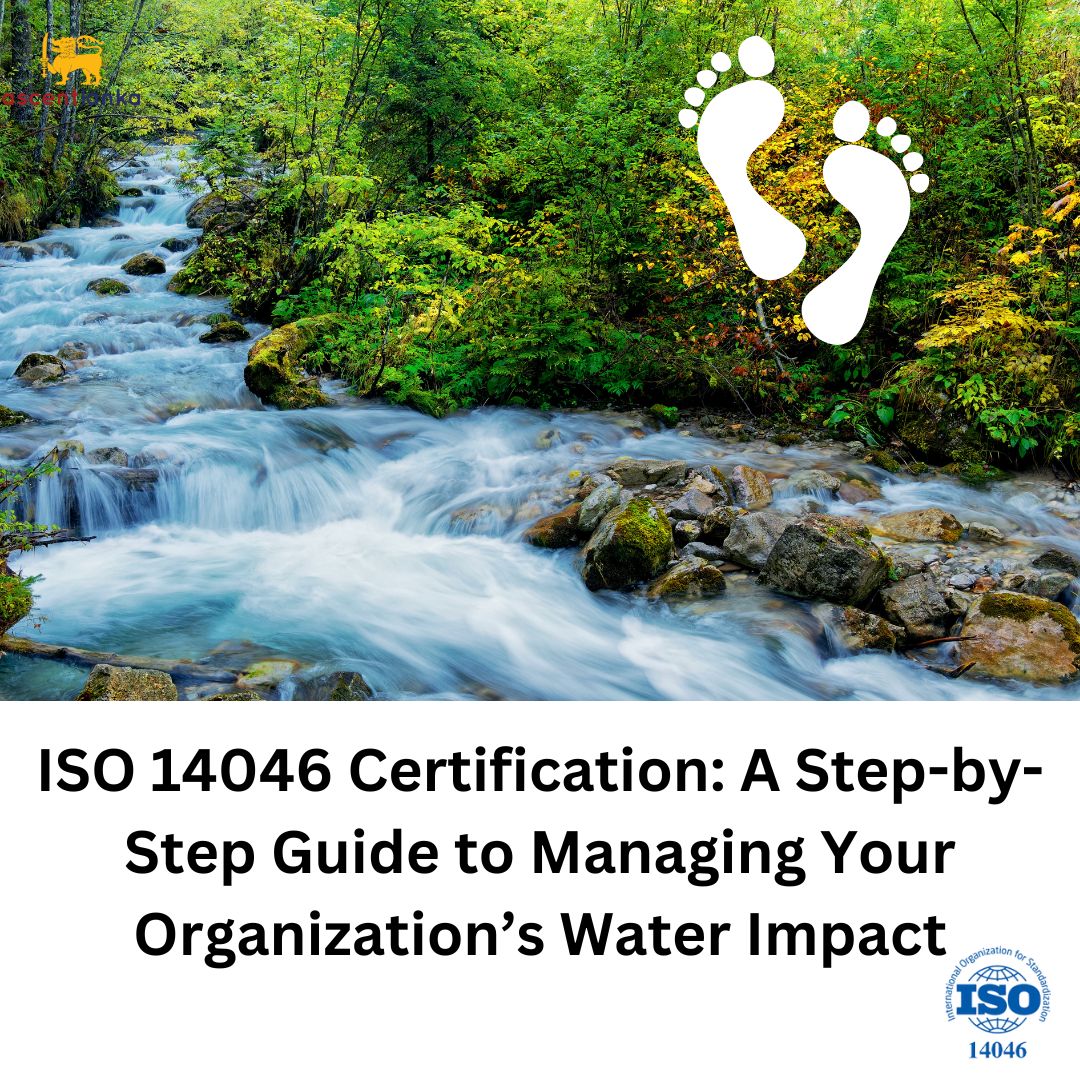Published: July 17, 2025
ISO 14046 Certification: A Step-by-Step Guide to Managing Your Organization’s Water Impact

In today’s era of environmental consciousness, organizations are increasingly focusing on sustainable resource management. Water, being one of the most critical and limited resources, has emerged as a key area of concern. ISO 14046, the international standard for water footprint assessment, provides a structured framework for organizations to evaluate and manage their water-related impacts effectively. This blog examines the ISO 14046 certification and provides a step-by-step guide to help organizations navigate the certification process and enhance their water sustainability.
What is ISO 14046?
ISO 14046 is an international standard that specifies principles, requirements, and guidelines for assessing the water footprint of products, processes, and organizations based on life cycle assessment (LCA). The standard aims to help organizations quantify their water use and assess potential environmental impacts related to water scarcity, pollution, and ecosystem degradation.
By adopting ISO 14046, organizations can:
- → Measure direct and indirect water usage
- → Identify opportunities for reducing water consumption
- → Improve water management practices
- → Enhance environmental sustainability
- → Demonstrate commitment to stakeholders
Why ISO 14046 Certification Matters
Water scarcity is becoming a global challenge, affecting industries, communities, and ecosystems. ISO 14046 certification offers several benefits:
- → Credibility and Transparency: Provides third-party validation of water footprint assessments.
- → Risk Management: Helps identify water-related risks in the supply chain.
- → Regulatory Compliance: Assists in meeting regulatory and environmental requirements.
- → Competitive Advantage: Differentiates companies committed to sustainability.
- → Stakeholder Trust: Builds confidence among investors, customers, and communities.
Obtaining ISO 14046 certification reflects an organization’s proactive approach to environmental stewardship and sustainable development.
Step‑by‑Step Guide to ISO 14046 Certification
- → Understand the Standard Requirements: Familiarize your team with ISO 14046’s principles, terminology, and methodology—covering goal and scope definition, inventory analysis, impact assessment, and result interpretation. Consulting with experts can be beneficial.
-
→ Conduct a Gap Analysis:
Compare your current water management practices against ISO 14046 requirements. Ask:
- → How is water currently used?
- → What data systems exist?
- → Are there points of inefficiency or risk?
- → Define Goals and Scope: Set objectives and determine boundaries: products or processes to assess, geographical coverage, stakeholders involved, and timeframe.
- → Inventory Analysis: Collect detailed data on water inputs/outputs, sources (surface, groundwater), points of consumption, wastewater generation, and emissions.
-
→ Impact Assessment:
Evaluate water-related environmental impacts in three key categories:
- → Water Scarcity
- → Water Quality Degradation
- → Ecosystem Degradation
- → Interpretation of Results: Analyze results to identify hotspots, inefficiencies, and improvement opportunities such as water-saving tech or sustainable sourcing.
- → Implement Improvement Measures: Adopt action plans: install efficient equipment, reuse water, engage suppliers, and train staff on water conservation.
- → Documentation and Reporting: Maintain transparent documentation of methodologies, data quality, boundaries, results, and improvement plans to support certification credibility.
- → Third-Party Verification: Invite an accredited body to audit your water footprint assessment. Successful verification results in ISO 14046 certification.
- → Continuous Improvement: Treat ISO 14046 as a living system: monitor, review, and enhance water practices regularly to adapt to environmental and stakeholder needs.
Conclusion
ISO 14046 certification enables organizations to adopt a systematic and credible approach to managing their water-related impacts. By following this structured guide, companies not only achieve certification but also contribute to global water conservation efforts. In a world facing increasing water pressure, leading in water stewardship strengthens resilience, reputation, and long‑term success.
Embark on your ISO 14046 journey today and make a meaningful impact on the planet’s most precious resource!
Contact us today →

Leave a comment below: